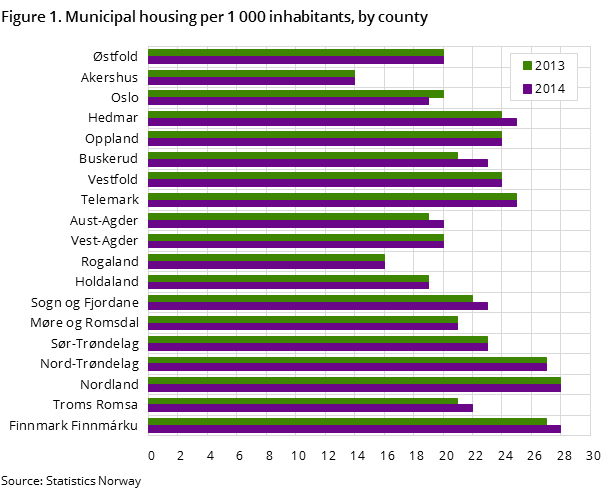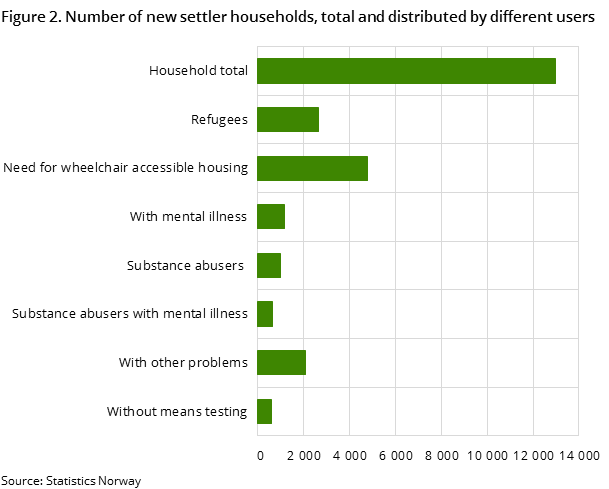Content
Published:
This is an archived release.
Stable municipal housing
There has been a small increase in municipal housing in 2014. More refugees have moved into municipal housing for the first time in 2014.
| 2010 | 2011 | 2012 | 2013 | 2014 | |
|---|---|---|---|---|---|
| Total number of municipal disposed dwellings | 96 403 | 101 670 | 103 164 | 105 144 | 105 567 |
| Dwellings with municipal right of disposal, per 1 000 inhabitants | 21 | 20 | 20 | 21 | 20 |
| Share of municipal dwellings accessible for wheelchair users | 45 | 46 | 47 | 48 | 48 |
| Net operating expenditures, public housing and related services, per capita in NOK | -30.3 | -10.8 | -2.5 | 42.0 | 21.6 |
| Gross operating expenditures, public housing, per dwelling with municipal right in NOK | 42 152 | 48 492 | 46 700 | 50 537 | 55 075 |


In Norway there were 105 567 municipal houses in 2014; 423 more than in 2013. This means there were 20 houses for every 1 000 inhabitants in 2014. Most of these houses, about 78 per cent are owned by the municipalities themselves. This is a lower level compared with 2013.
Norwegian municipalities received 37 464 applications from households in 2014. This is a decrease of 0.8 per cent compared with 2013, when 37 765 application were received.
Five per cent of the households lived in temporary housing in 2014, which is the same level as 2013.
Furthermore, almost 21 per cent of the new settler households were given municipal housing because they were refugees and 9 per cent because of mental illness. Less than 8 per cent were given municipal housing because of substance abuse, which is a small decrease from the year 2013 when almost 9 per cent were in this category. Five per cent of the households receiving municipal housing were suffering from a combination of mental illness and substance abuse. In total, the group with a mental illness and/or substance abusers has decreased from 24 per cent in 2013 to less than 22 per cent in 2014.
Sixteen per cent of households with other problems were given municipal housing in 2014, which is almost the same level as in 2013. Thirty-seven per cent of the households with a need for wheelchair accessible housing were given municipal housing. More than 4 per cent of the households were given municipal housing without means testing.
Contact
-
Unni Beate Grebstad
E-mail: unni.grebstad@ssb.no
tel.: (+47) 94 50 68 66
-
Wasif T. Hussain
E-mail: wasif.hussain@ssb.no
tel.: (+47) 40 90 24 09
